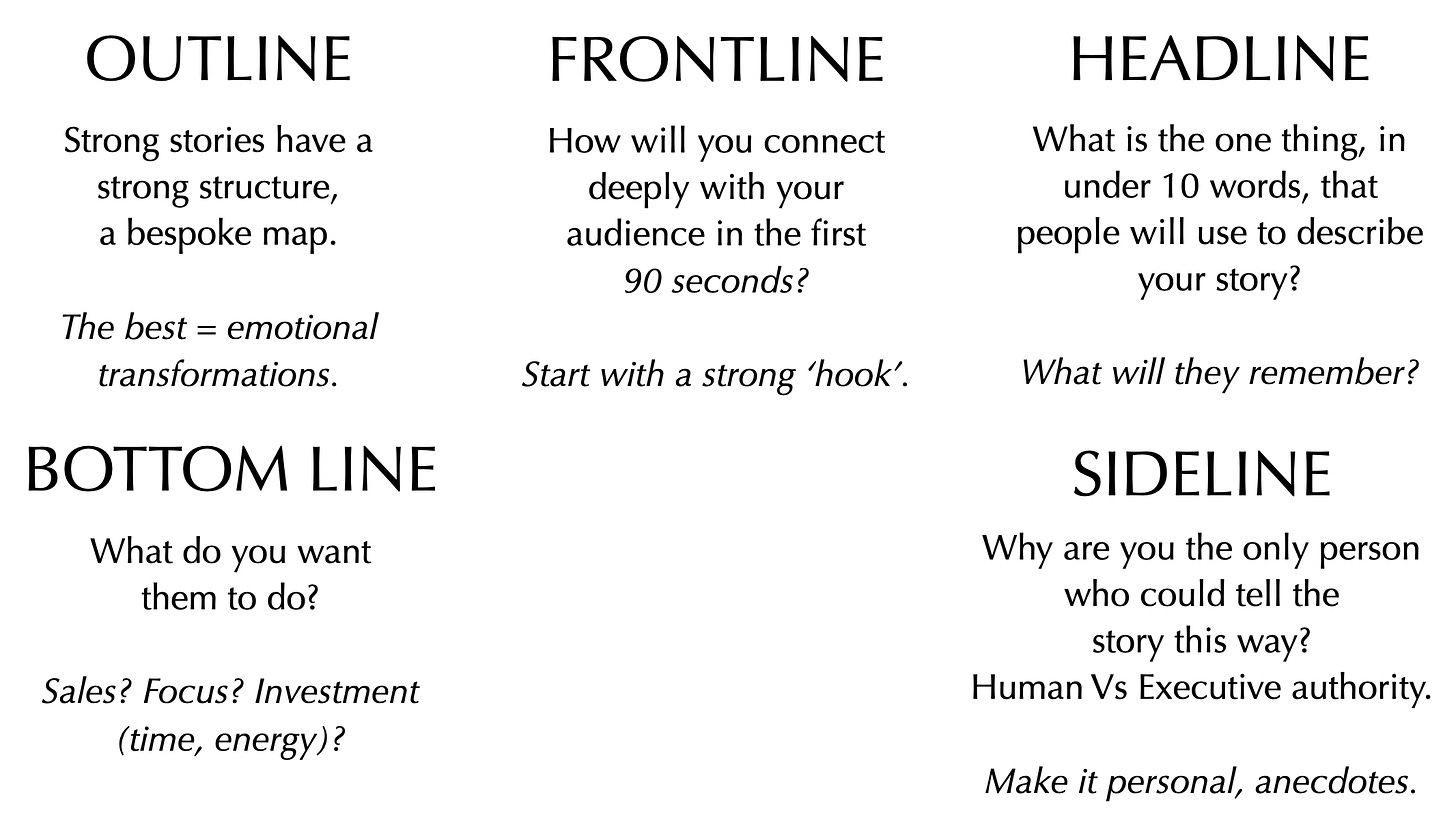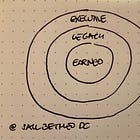The Logic trap
It’s as pervasive as it is dangerous.
The assumption that if your business idea, your creative idea, your point of view, your strategy is great, that just by sharing it, others will see the wisdom in the argument, they will buy into what you are selling, they will be persuaded.
The facts will speak for themselves, the powerful logic will cement the deal, how could it not?
If only.
Thinking and ideas are never understood in isolation, and certainly never without the believability of the author/s. You always have to layer in the human to any conversation about persuasion.
To simply ask: How do we take them with us? How do you get them on board as well?
Aristotles building blocks
There are some simple elements to keep in mind when trying to persuade others of something:
ETHOS - Is the source credible? Do they have authority to know what they are talking about? Without this, you probably need to stop, without this you aren’t going to get very far.
PATHOS - There’s a part of the brain called the Limbic System, and in it are two structures called the Amygdala, if they are damaged, we can’t really make decisions. Why? They control emotions and without emotions you can’t make decisions. Remember, most of the time we post rationalise an emotional decision, not the other way round.
LOGOS - The most obvious one, and perhaps the easiest: it also needs to make sense, be logical to the person/s you are trying to persuade.
KAIROS - Lastly, the time element, why now?
Ted Sorensen
There is a system that I find particularly helpful, and that’s from a storytelling master, JFK’s speech writer Ted Sorensen. Here’s my adapted version of his his basic principles:
It’s worth digging into one in particular: Emotionality - Disturb. Excite. Assure.
This is something that I always use in any bit of communication, to ask what emotions am I trying to elicit? How can I take the audience on a journey from one emotion to another? How can I help them feel differently? It can be in a different order: Excite - Disturb - Assure, but it almost always has those elements.
Consider surprise
There is also a meta emotion that sits above and beyond these - surprise. If you are aiming for anything, aim for surprise because it is the emotion studies show is most likely to elicit action, and it is also the root of a strong memory trace - it has a place (it is familiar) but also a place of its own (it is also different).
There is always a little risk attached to surprise, you’ll need to be careful and test it with others first, but it is a weapon of persuasion that is well worth considering.
All of these are critical, but you also need other key elements, Ted Sorensen defines these as Outline, Frontline, Headline, Bottom line and Sideline.
These are all important, they are vital ingredients that can make a profound difference to any presentation, talk or pitch.
But of all of them Outline is the fulcrum, it is the frame from which everything else is hung, it is the system to build to and from…
A simple shift
That framework needs to be constructed around a fundamental shift, one that is aiming for a transfer of confidence and conviction as much as it is a transfer of facts.
As Jeremy Connell-Waite’s puts it: Feel different, behave different.
This is easier said than done, because it’s here that the worlds of strategy and ideas begin to merge, where business and comms most align.
Because to make that shift you need to find what’s most interesting, what’s most compelling and organise yourself around those things.
A simple framework
This works a bit like a great ad, or a great story, it has a start, a middle and an end. It’s not revolutionary, but it works, ‘keep it simple stupid’ and all that:
To ask - The hook: How do I get them to notice, to lean in, to engage (again think of surprise as a filter here)? The journey: how do I sustain that interest? Ask, as mentioned earlier, what emotions do I want to create at each step, in each of those manageable chunks? (actually write the emotions and the shifts down and look at how you can deliver them). The reward: then how do I link back to my beginning, how do I answer the question I have asked of myself and of them? How do those chunks, those emotional journeys steps add up to that reward?
If nothing more, put yourself in the audiences shoes, would you really find this interesting if you didn’t have to listen and watch? Might you engage if you were outside this place?
Note - this has parallels with different kinds of authority - if you want a deeper look you can find it in this short article:
The delivery
This is one thing that most people don’t really engage that much with, because it’s arguably the hardest, because it requires the most work - the actual delivery.
There are no hard and fast rules but here are key things to consider:
Vary your tone, pace and volume: If you are ‘mono’ in delivery, so will how people engage, mix it up.
Posture, place and movement: If you are doing this in real life, this is particularly important, standing confidently in one place is great but not the whole time.
There is power in the pause, use it: don’t be in a rush to get through it, leave gaps, it can increase interest but also a sense of authority and confidence.
Interact with the audience: This is one of the most difficult things to pull off, but if you can do it, do. It could be as simple as a slido survey, or a raise of hands at the beginning and end.
Lastly - Staged. Caged. Natural.
One last thing which is a combination of all of the previous ideas, is that to present anything really well, especially to a bigger audience, I have found there are essentially three stages everyone moves through…
Staged: When something is clunky, it feels the opposite of natural, it looks like it too: it's wooden, it's semi acting.
Caged: Many of those staged elements have been ironed out, much is good, the person feels much better, feels much more assured. They could probably do it all without notes or charts and with minimal stress.
Natural: It is almost automatic, it flows, it feels natural for the deliverer, and it looks deeply confident and assured for the receiver.
This natural state also allows something else: It is flexible, when you are there, you can pivot, you can adjust. It's a confidence multiplier.
If you’ve ever got to this space, you’ll know it feels as lovely as it sounds, for everyone concerned.
The step between Caged and Natural is the hardest, and it requires the most work.
So there you have it.
If you want to win in the thinking and ideas game, you also have to win in persuasion, and that requires a whole other set of skills, systems and practise.
Don’t spend all your time crafting a beautiful idea or some transformational thinking only to let it fall over in how it is presented and shared.








